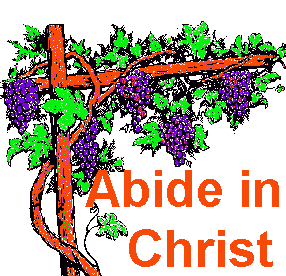The Gospel for the
Romans.
AUTHOR:
John Mark, was not an apostle (Acts 12:12f; Col.
4:10; Acts 15:37-39; Philemon 24; 2 Timothy 4:11; 1
Peter 5:13; Mark 14:5f; Acts 10:36-42), but the son
of Mary, a woman of wealth and position in Jerusalem
(Acts 12:12). His cousin was Barnabas, the discipler
and encourager and early companion of the Apostle
Paul (Acts 13:2; 4:36; Colossians 4:10). Mark was a
close friend of the Apostle Peter and the
interpreter for Peter (1 Peter 5:13). Most scholars
agree that Mark received much of his information
from the eye witness of the Apostle Peter. With this
authority as the source of information the Gospel
was never challenged in its inclusion in the Canon.
John Mark accompanied Paul and Barnabas on the First
Missionary Journey, but dropped out and returned to
Jerusalem. Therefore, Paul refused to take John Mark
on the second journey (Acts 15:38-40). Ten to twelve
years later we find him with Paul (Colossians 4:10;
Philemon 24). In the end Paul will ask Timothy to
pick up Mark and bring him along with him to Paul in
Rome, for he has found him useful for ministry (2
Timothy 4:11). Mark would have been one of the last
individuals to have seen Paul before he died.
DATE:
It is probably best to date Mark before A. D. 60
because Luke used Mark as one of his sources. A date
in the 50's is best for Mark, not long before the
Gospel of Matthew was written. Some scholars believe
it was written in the 60's.
PLACE:
Possibly Rome.
RECIPIENTS:
The first readers were Gentiles (non-Jewish) in
general, and Romans in particular.
THEME:
Jesus came into the world to save sinners (10:45).
Mark emphasizes the work of Christ. Christ is
observed in action. Jesus is a man of action and
power. This Gospel is active and fast-paced. He is
seen as the servant of God. Mark's purpose was
basically theological rather than historical. He is
not interested in Jesus as just a historical figure,
but as the Son of God and Savior. Mark omits
genealogy and the birth of Christ because no one is
interested in genealogy or ancestry of a slave. The
Apostle John omits any reference to human descent
because of his emphasis on the Deity of Christ. God
has no ancestry or genealogy. The book divides into
two major divisions: the Service of the Servant
(1:1-10:52), and the Sacrifice of the Servant
(11:1-16:20).
The Servant of God
exercised the powers of Deity, His sovereign
supremacy, but never on His own behalf. It was
always on the behalf of others.
KEY VERSE:
1:1; 10:45
DISTINCTIVES:
"(1) Mark wrote for Gentile readers in general and
Roman readers in particular." Therefore, he does not
include the genealogy of Christ which would mean
nothing to the Gentiles. He does not include the
Sermon on the Mount, and the condemnation of the
Jewish sects receives little attention. Unlike
Matthew, Mark felt it necessary to interpret Jewish
idioms of expression and Aramaic words (5:41; 7:34;
15:22), and he used Latin words not found in the
other gospels (6:27; 12:42).
(2) Mark omits Jewish
references which would not interest the Romans.
"There are only about 63 quotations or allusions
from the Old Testament in Mark as compared with
about 128 in Matthew and between 90 and 100 in
Luke."
"(3) This gospel
emphasizes what Jesus did rather than what He said."
Miracles interest him more than parables. The author
uses action words such as "at once," "immediately"
more than forty times (Ryrie Study Bible). It is a
fast paced book of action. Indeed, Mark pictures
Christ in action. A. T. Robertson notes, "The
framework of Mark's Gospel lies behind both Matthew
and Luke and nearly all of it is used by one or the
other."
(4) "If Mark wrote in
Rome, as is quite possible, his book was looked upon
as the Roman Gospel and had a powerful environment
in which to take root" (Robertson).
(5) It is the Gospel of
Personal Reactions. The reactions of the audiences
of Jesus are reported at least twenty-times. Among
these reactions are amazement (1:27), critical
(2:7), afraid (4:41), puzzled (6:14), astonished
(7:37), and hostile (14:1).
STYLE:
No other Gospel moves so rapidly from one scene to
another with vividness of detail, picturesqueness of
description. One can almost feel the rapid movement
from place to place. Vincent says, "His narrative
runs." Of the 661 verses in Mark the substance of
all but 31 will be found in Matthew and Luke.
It is mainly narrative
and the style is direct and simple with many vivid
touches, like the historical present of an
eyewitness. The early writers all agree that Mark
was the interpreter for Simon Peter with whom he was
at one time, according to Peter's own statement,
either in Babylon or Rome (I Peter 5:13). This
Gospel. . . is fullest of striking details that
apparently came from Peter's discourses which Mark
heard, such as green grass, flower beds (6:38), two
thousands hogs (5:13), looking round about (3:5,
34). Peter usually spoke in Aramaic and Mark has
more Aramaic phrases than the others, like Boanerges
(3:17), Talithacumi (5:41), Korban (7:11), Ephphatha
(7:34), Abba (14:36). The Greek is distinctly
vernacular. . . as one would expect from both Peter
and Mark. There are also more Latin phrases and
idioms. . . than the other Gospels. There is the
minimum of discourse and a maximum of deed
(Robertson).
A. T. Robertson says, "In
my Harmony of the Gospels I have placed Mark first
in the framework since Matthew, Luke, and John all
follow in broad outline his plan with additions and
supplemental material. Mark's Gospel throbs with
life and bristles with vivid details. We see with
Peter's eyes and catch almost the very look and
gesture of Jesus as He moved among men in His work
of healing men's bodies and saving men's souls.
MANUSCRIPT OF MARK
16:9-20: Does Mark 16:9-20 belong to the original
Gospel as penned by John Mark? These verses are
omitted by some of the best of the ancient
manuscript copies. A different ending is to be found
in other ancient copies. However, the majority of
the manuscripts, versions, and early church fathers,
give the ending which we have in the King James
Version.
TOOLS FOR EXPOSITION:
For a satisfactory study of any of the Gospels a
harmony is needed. The best on the four Gospels is
that by A. T. Robertson, A Harmony of the Gospels.
Another excellent tool is a dictionary of Biblical
words. The best one in English is An Expository
Dictionary of the New Testament Words by W. E.
Vine. The International Dictionary of the Bible
published by Zondervan, and the two volume Baker
Encyclopedia of the Bible, edited by Walter A.
Elwell and published by Baker Book House are
excellent for background studies. The
International Standard Bible Encyclopedia by
Eerdmans.
Title: Introduction to
Gospel of Mark
Series: A Look at the
Book



